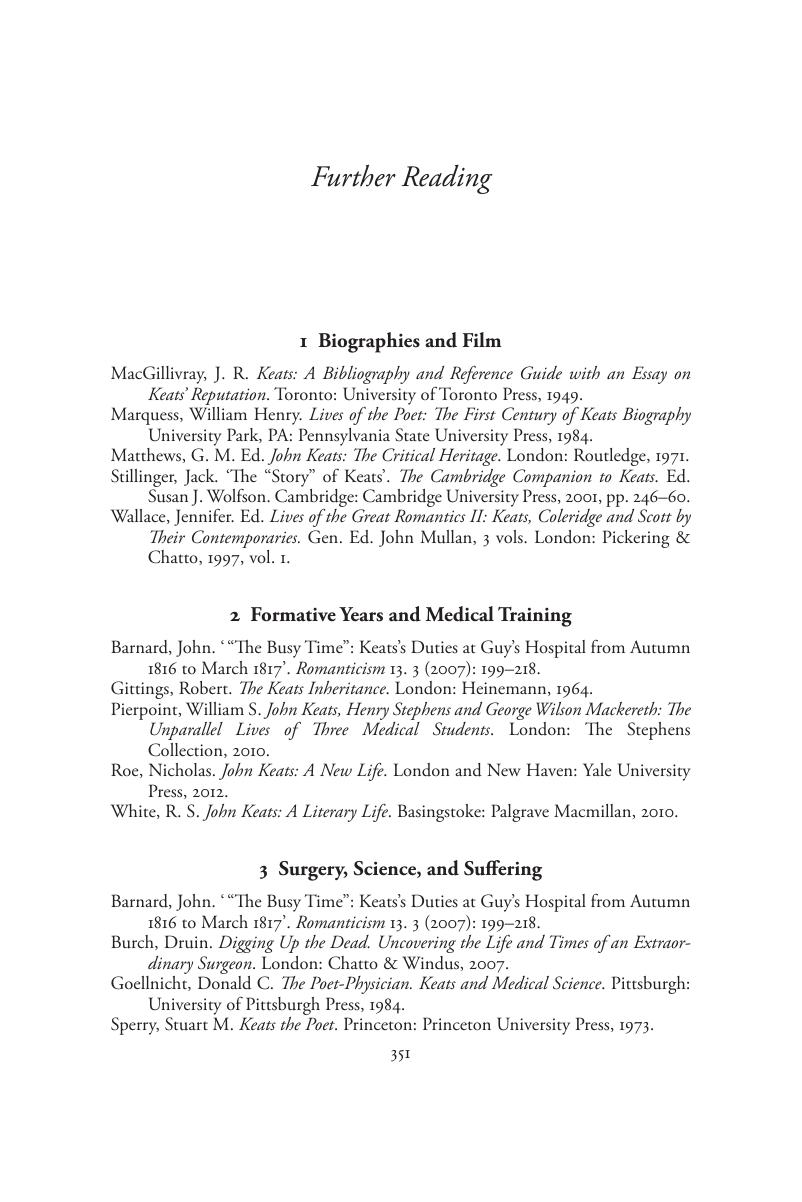Book contents
- John Keats in Context
- John Keats in Context
- Copyright page
- Contents
- Contributors
- Acknowledgements
- Note on Texts, Citations, and Abbreviations
- Introduction
- Part I Life, Letters, Texts
- Part II Cultural Contexts
- Part III Ideas and Poetics
- Part IV Poetic Contexts
- Part V Influence
- Part VI Critical Reception
- Further Reading
- Index
- References
Further Reading
Published online by Cambridge University Press: 04 July 2017
- John Keats in Context
- John Keats in Context
- Copyright page
- Contents
- Contributors
- Acknowledgements
- Note on Texts, Citations, and Abbreviations
- Introduction
- Part I Life, Letters, Texts
- Part II Cultural Contexts
- Part III Ideas and Poetics
- Part IV Poetic Contexts
- Part V Influence
- Part VI Critical Reception
- Further Reading
- Index
- References
Summary

- Type
- Chapter
- Information
- John Keats in Context , pp. 351 - 362Publisher: Cambridge University PressPrint publication year: 2017



